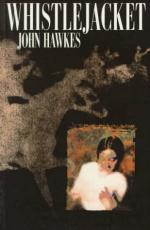|
This section contains 583 words (approx. 2 pages at 300 words per page) |

|
Horses have been used as potent social and literary symbols since the dawn of literature. For the Ancient Greeks, the horse symbolized Poseidon, God of the Sea, and in the Iliad, the horse symbolized Troy and Troy's bond to Poseidon. The infamous Trojan horse, because it gained the invaders entry to Troy, was symbolic of the breaking of that bond. Greek dramatists also used horses as symbols, most notably Aeschylus, who in his plays used horses to represent characters and social concepts. In cultures, such as that of medieval Europe, that depend heavily on the horse for traveling and the transportation of goods, horses would naturally show up in their literature as representative of power and freedom — the ability to escape from the restraints of civilization. No knight errant would be complete without his mighty steed. The medieval English poet Chaucer uses horses somewhat as...
|
This section contains 583 words (approx. 2 pages at 300 words per page) |

|




